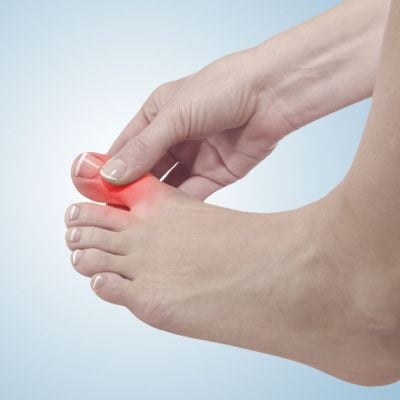 Hallux Limitus, a condition affecting the metatarsophalangeal (MTP) joint of the big toe, can significantly impact an individual's mobility and overall foot health. This article aims to delve into the intricacies of Hallux Limitus, covering its causes, symptoms, diagnosis, and potential treatment options.
Hallux Limitus, a condition affecting the metatarsophalangeal (MTP) joint of the big toe, can significantly impact an individual's mobility and overall foot health. This article aims to delve into the intricacies of Hallux Limitus, covering its causes, symptoms, diagnosis, and potential treatment options.
What Causes Hallux Limitus?
Hallux Limitus typically arises from the gradual wear and tear of the MTP joint, a hinge-like structure connecting the big toe to the foot. Arthritis, particularly osteoarthritis, plays a significant role in this degeneration, leading to cartilage erosion within the joint. Additionally, genetic predispositions and structural abnormalities in the foot can contribute to the development of this condition.
Signs and Symptoms
Individuals grappling with Hallux Limitus may experience a range of symptoms. The early stages often manifest as pain and stiffness in the big toe joint, particularly during activities that involve bending the toe, such as walking or running. As the condition progresses, swelling may occur, and the range of motion in the affected toe diminishes, impacting day-to-day activities.
Diagnosis
A precise diagnosis of Hallux Limitus requires a thorough examination by a healthcare professional. X-rays are commonly employed to assess the extent of joint damage and identify any potential bone spurs, a common occurrence in this condition. The severity of Hallux Limitus is a critical factor in determining the most effective treatment approach.
Treatment Modalities - Strategies to Alleviate Hallux Limitus Discomfort
- Conservative Approaches: In milder cases, conservative measures may prove effective. These include rest, application of ice, and the use of anti-inflammatory medications. Orthotic devices can also be beneficial in redistributing pressure on the joint.
- Physical Therapy: Targeted exercises and physical therapy are often recommended to enhance joint flexibility and strengthen the surrounding muscles. This not only provides relief but also slows down the condition's progression.
- Footwear Considerations: Choosing footwear with a spacious toe box and lower heels can alleviate pressure on the big toe joint, facilitating a more comfortable gait.
- Medications: Nonsteroidal anti-inflammatory drugs (NSAIDs) may be prescribed to manage pain and inflammation associated with Hallux Limitus.
- Surgical Intervention: In cases where conservative measures prove inadequate, surgical options such as joint preservation procedures or arthroplasty may be considered to restore joint function.
Incorporating Lifestyle Adjustments for Long-Term Management
Beyond medical interventions, lifestyle modifications are pivotal in managing Hallux Limitus. Maintaining a healthy weight, engaging in low-impact exercises, and wearing supportive footwear are proactive measures that can contribute to improved joint health and overall well-being.
Seeking Timely Professional Guidance
Individuals experiencing symptoms suggestive of Hallux Limitus should seek prompt medical attention. Early diagnosis and the initiation of a tailored treatment plan are paramount in mitigating discomfort, improving mobility, and preserving overall foot health.
Conclusion
In conclusion, a comprehensive understanding of Hallux Limitus empowers individuals to participate actively in their foot health. From recognizing symptoms to exploring a spectrum of treatment options, the journey towards managing a stiff big toe joint requires collaboration between patients and healthcare professionals. By fostering awareness and providing targeted interventions, Hallux Limitus can be navigated with a focus on improving the quality of life for those affected.
Disclaimer:
The information on this website is provided for educational and information purposes only and is not medical advice. Always consult with a licensed medical provider and follow their recommendations regardless of what you read on this website. If you think you are having a medical emergency, dial 911 or go to the nearest emergency room. Links to other third-party websites are provided for your convenience only. If you decide to access any of the third-party websites, you do so entirely at your own risk and subject to the terms of use for those websites. Neither Evanston Foot and Ankle Clinic, nor any contributor to this website, makes any representation, express or implied, regarding the information provided on this website or any information you may access on a third-party website using a link. Use of this website does not establish a doctor-patient relationship. If you would like to request an appointment with a health care provider, please call our office at (847) 864-5010.


